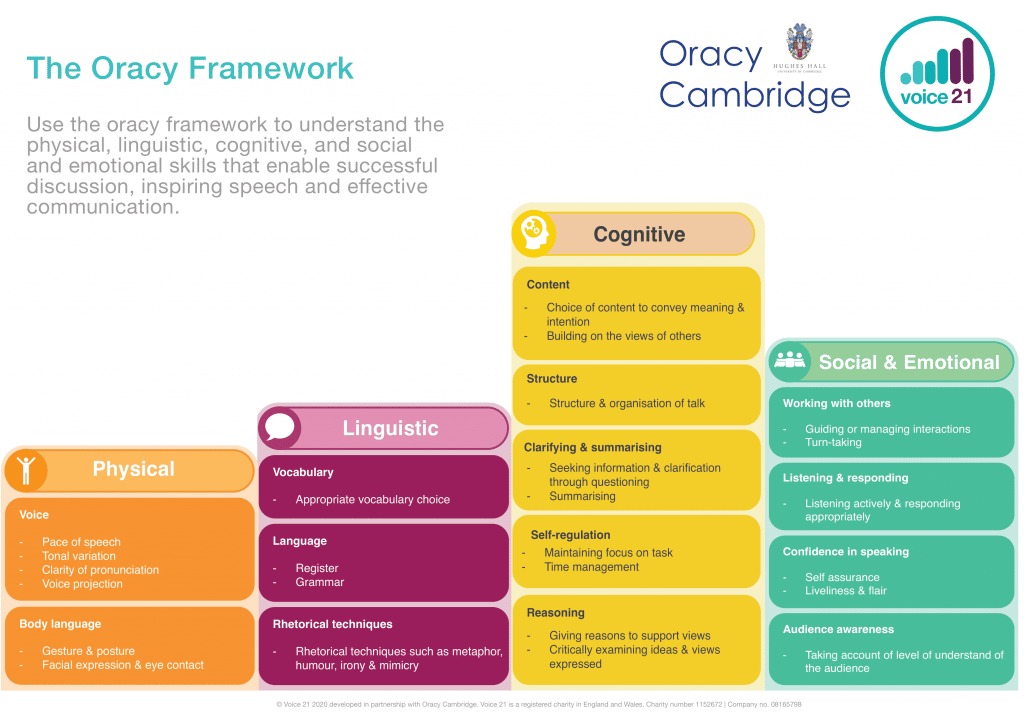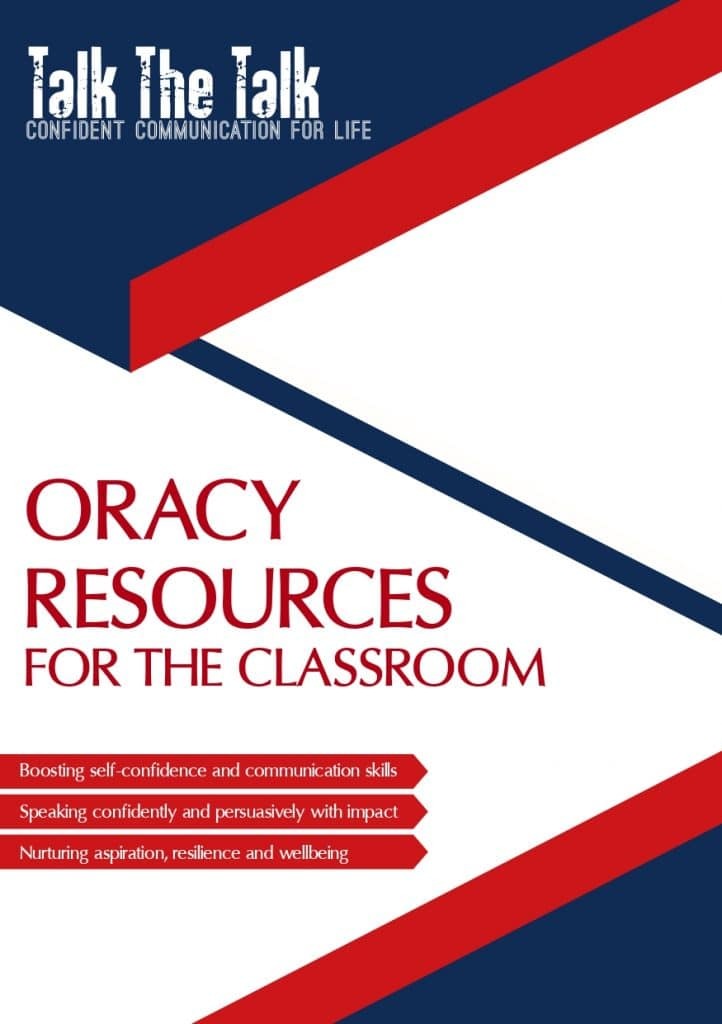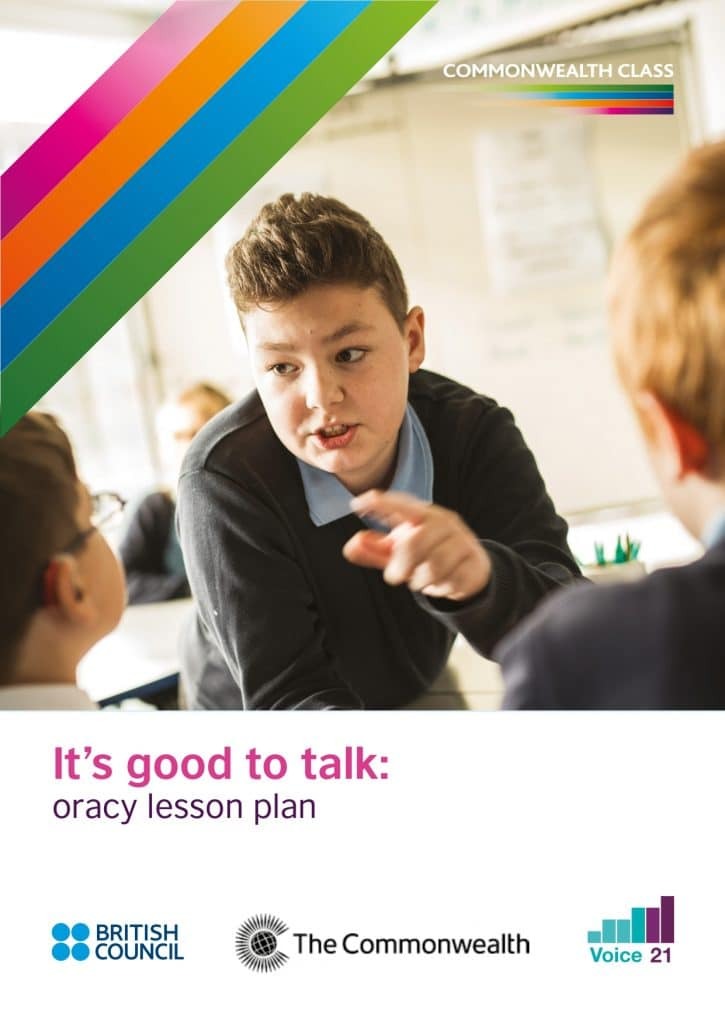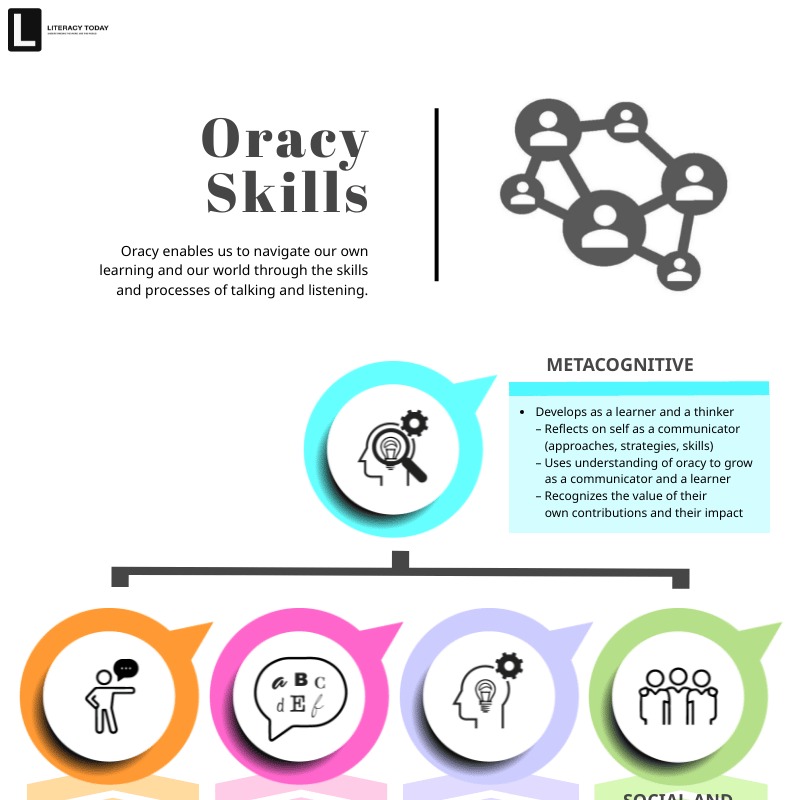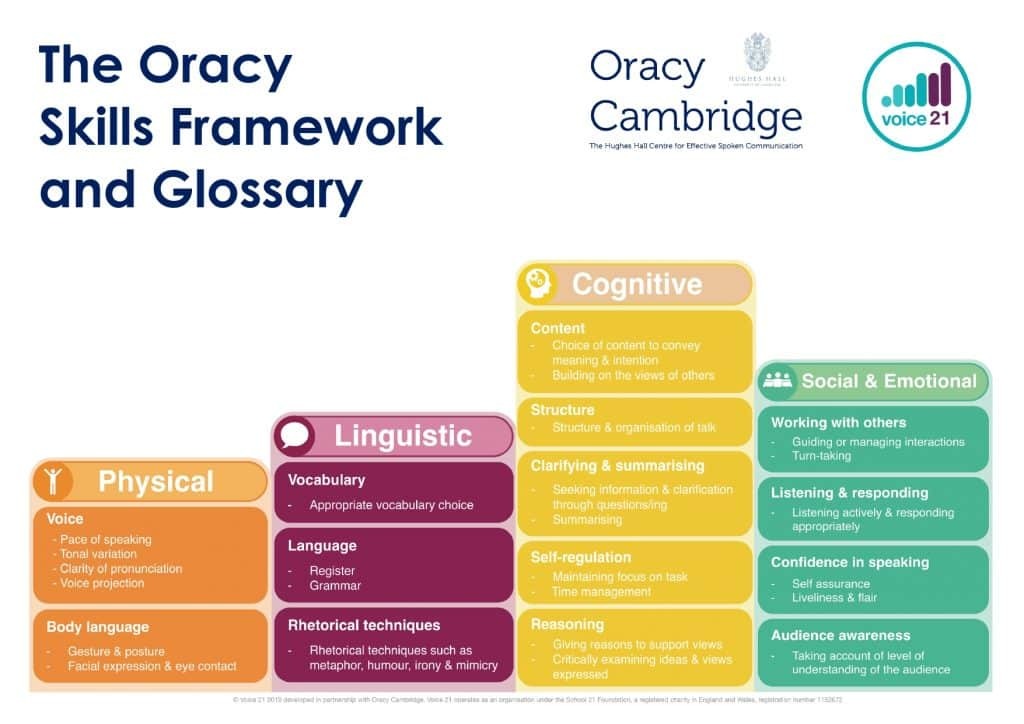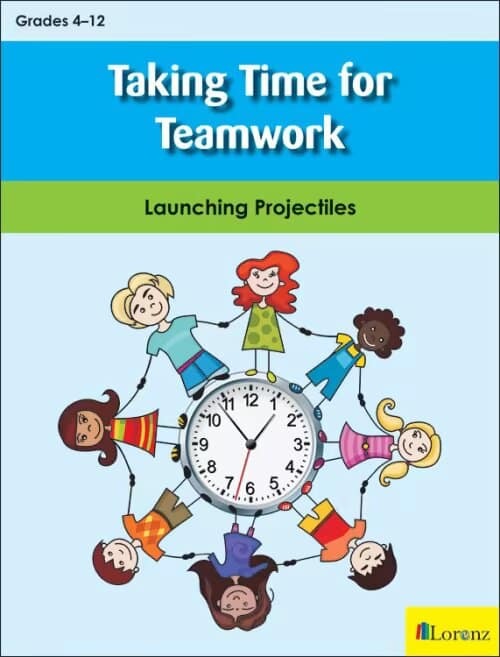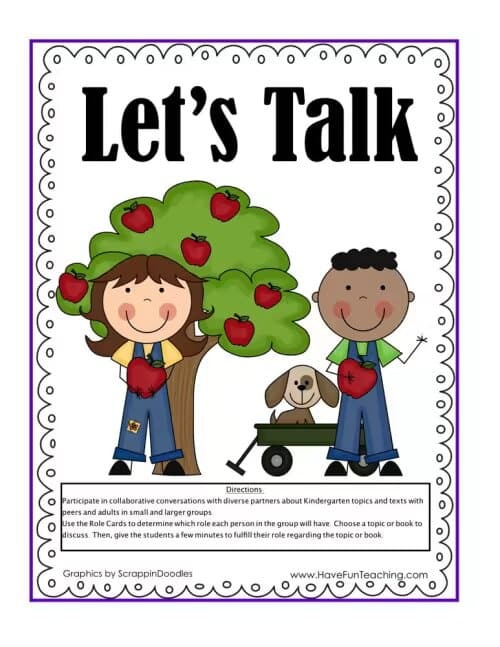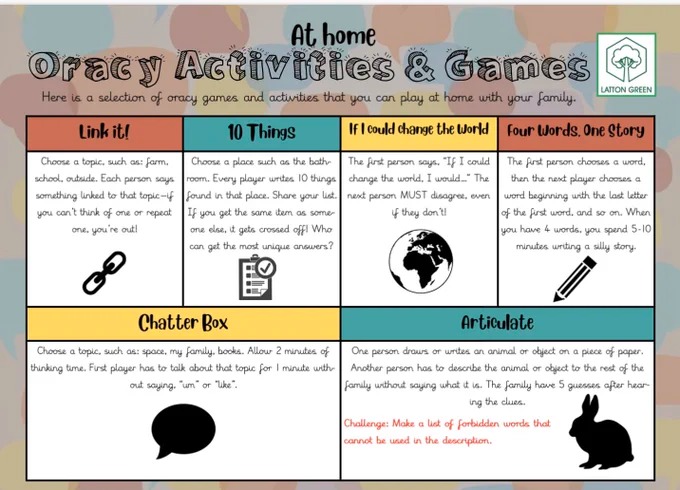What are oracy skills? Oracy is, simply put, the ability to effectively express oneself through written speech. Oracy is a vitally important set of skills that include the physical, cognitive, emotional, and linguistic aspects of speech.
Just a few examples of the many facets of oracy include the ability to: listen and respond appropriately, choose vocabulary words, use proper pronunciation, and take turns when talking with others.
As one could surmise from this non-exhaustive list, these are skills that are vital to students’ success both in and out of the classroom. A recent study by The Communication Trust found that children who struggled with oracy skills, such as vocabulary and speaking aloud were substantially less likely to reach the expected levels in all subjects, not just language arts, by age 11. These same children were also more likely to experience social difficulties.
Benefits of Oracy

Students who exhibit good oracy skills will have an easier time participating in the classroom, but the benefits of oracy extend far beyond the school walls.
Social and Emotional Development
Oracy enhances social and emotional development by allowing children to express their needs and effectively communicate with both adults and peers. The ability to listen and respond to others appropriately builds empathy and resilience in students of all ages.
The ability to be comfortable speaking in front of others also translates to increased self-esteem.
School Success
Enhanced language proficiency also correlates positively with school success. Students who are comfortable speaking up with class perform better on group projects and participate more in classroom discussions.
Oracy skills may be most obvious to teachers when dealing with language-related subjects (ELA), because of the direct correlation between spoken and written or read language. Most of the time, although not always, children with exceptional literary skills will also have good oracy skills.
Interestingly, these school gains extend beyond ELA classes. Students with good oracy skills perform better across all subjects, including maths and sciences.
Cognitive Development
As humans, much of our world is structured around language. Young children, in particular, are naturally wired for language learning. This use and learning of language creates neural pathways that spur further brain development. Spoken language is one of the primary ways that children absorb information and learn about the world, which makes mastery of oracy skills vital to overall development.
In the United States, widespread and accepted benchmarks for oracy skills are largely absent. Oracy is often broken down into discrete skills which a teacher can assess through specific oracy-based activities or in the course of the regular classroom routine.
The key oracy skill sets that teachers should be looking at include:
Listening and Response:
The ability of the student to take turns in a conversation and to understand when to listen and when to respond.
Presentation and Expression:
A student’s skill in presenting information at an appropriate level for the audience and to use variations in tone or other tools to engage listeners.
Prioritisation and Organisation:
The ability to prioritise information and present it in a cohesive, linear format. This can include telling a story (with events in chronological order) or, for example, giving a presentation which includes an introduction and conclusion.
Physical:
The student’s ability to pronounce words, proper breathing and posture while communicating, making eye contact, and related communication behaviours.
Grammar/Choice of Words:
This includes a student’s vocabulary and use of grammar to present thoughts in an organised fashion.
Content Structure:
Presenting information within the structure of the given assignment. Staying within time limits and using assigned structures fall under this skill.
10 Ideas for Oracy Activities

Implementing oracy activities into your regular classroom routine is much easier than you might think. Classrooms are already language-rich environments.
However, in many classes, the focus is more on the written word. Simple shifts can help to incorporate more opportunities for using spoken language in learning activities. A few ideas for incorporating oracy skills include:
Learning Conversations
Offer chances for students, in groups or individually, to speak up during lessons. Thoughtful, open-ended questions create the best opportunities for meaningful conversation.
Creating Discussion Guidelines
Work with students to create guidelines on what a good discussion looks like. Model and practice using those skills as a group.
Structured Debates:
Teach students debate skills and allow them to debate on a topic of their choosing (for ELA or public speaking practice) or an issue that aligns with the subject curriculum. Allow other students to ask questions at the end of the debate.
Collaboration:
Offer opportunities for students to work in groups to facilitate the social and organisational aspects of oracy skills.
Read Aloud:
Give students the chance to read aloud to work on physical and cognitive oracy skills. This can be particularly helpful for improving self-confidence in shyer students who do better with a “script” for speaking.
Book Talks:
Book Talks are a more interactive version of a book report, the reader has an opportunity to tell the class about a book they read, after which other students can ask the speaker questions.
Instructions-Based Activities:
Consider giving students spoken instructions for activities (rather than written). Allow time for questions or ask students to repeat the instructions to the class, or to summarise what they have been told.
Listening Skills Games:
Games which require close listening, such as “Red Light, Green Light” or “Simon Says” are great ways for younger students to hone their listening skills. Give students a chance to be the leader of the game and give direction.
Circle Time:
During circle time, give students a turn to talk about a given subject or question for a set period of time.
Community Meeting:
Offering older students the chance to weigh in on issues that affect your school, classroom, or greater community can raise self-esteem, decrease stress, and improve communication skills.
Top Tips for More Effective Oracy Teaching
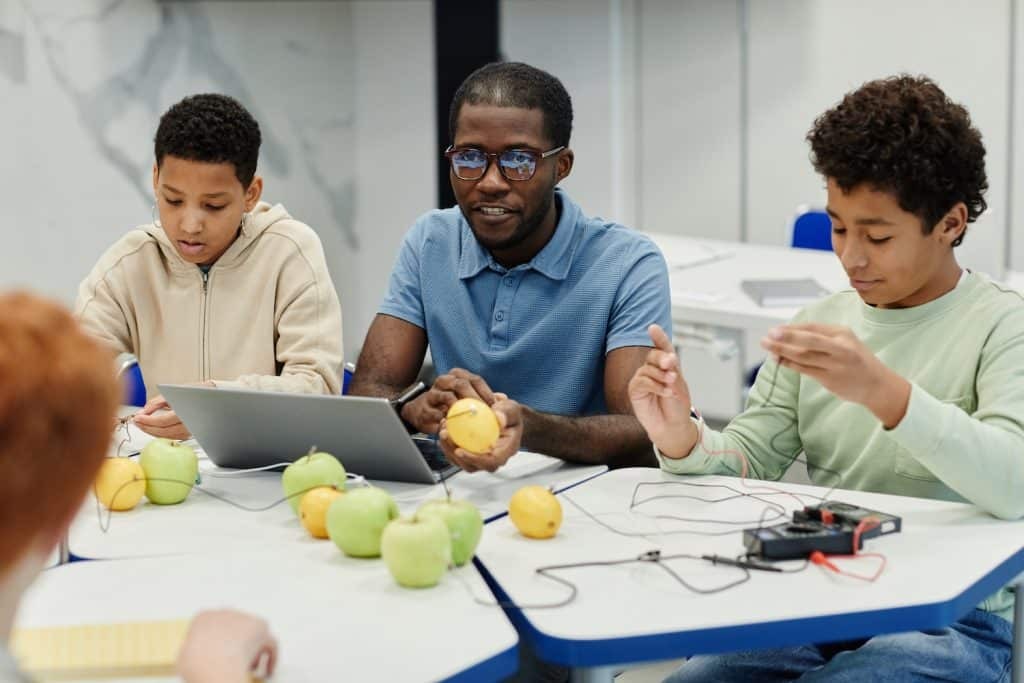
All teachers know that kids love to chat. Many would argue, in fact, that keeping students quiet is one of the toughest parts of classroom management. While considering ways to manage talkative students, teachers can actually embrace this desire to communicate and find ways to harness it toward improved student oracy! Experts suggest the following to create a classroom that encourages communication:
Consider Seating Arrangements
Create configurations that encourage dialog and collaboration will go a long way toward getting students talking (at the right times!) Consider which students might group well together and how to arrange them so that no one is physically “out of the action” during group activities.
Give Students Guidance
Without guidance and direct instructions for an activity, talking about school material can quickly devolve into general chit-chat. Equip students with the tools they need to complete an activity or discussion with purpose.
Encouragement
Find ways to include, and encourage, quieter students. When students are struggling to come up with words, give them sentence stems to help them formulate responses.
Teach Oracy Explicitly
Make time to include lessons in communication skills, such as presenting, negotiating, or storytelling. These lessons can easily be worked into the subject matter. For example, if students are studying the court system, consider a lesson on how debates work and how to effectively argue a point.
Model Oracy Skills.
This includes speaking to students in responsible, direct ways, but also listening to them. Allow time for questions and show that their contributions are valued. Encourage students to speak up (at appropriate times.)
Bell Ringers
Use bell-ringer time to practise oracy skills. This chunk of time at the beginning of class is an excellent opportunity to engage students in creating questions, scenarios, stories, or other written work which can later be used in a presentation or a Q and A.
Know Each Other
Give students a chance to get to know each other. Find ways to allow students to express their own ideas, likes, and interests. Students who are slower to speak up may benefit from being asked about their favourite things. Consider doing an abbreviated version of “show and tell” where – for example – one student a week can relate a story or something of interest to them.
Interviews
Give students the opportunity to conduct interviews. An interview is a wonderful model for conversation, as it requires coming up with thoughtful questions and responding and adjusting in real time to incoming information. Interviews can be used for a wide variety of assignments. Depending on the assignment, students may be able to interview other students, teachers, or their families.
Get The Parents Involved
Share the importance of oracy with parents. This is particularly important for families of younger children, and special education or ESL students. Let families know that this is a skill that the class is working on together and encourage parents to continue conversations at home. Consider sending home prompts that families can use to continue discussions from class.
Resources
Because curriculum materials frequently overlook oracy as a discrete skill, finding information and resources for oracy in the classroom can be difficult. Yet, more and more schools are beginning to acknowledge the importance of oracy in the classroom and offer teachers training and additional resources.
There are several organisations that are devoted specifically to the advancement of oracy teaching that offer teaching guides and additional links via their websites, as well as training for both individual educators and schools. Educators may also find useful teaching materials within curriculum or educator websites, even if they are not explicitly labelled as oracy lessons.
Organizations, Research, and Training Resources:
Voice 21
An oracy-focused organization that provides training for educators and schools, along with articles and online resources.
Talk the Talk
Free training manual and oracy skills activity suggestions.
It’s Good to Talk
British Council’s oracy lesson planning guide.
Oracy Toolkit
Literacy Today’s Oracy Toolkit with links to additional resources.
Oracy Skills Framework and Glossary
Oracy Cambridge’s guide to understanding and teaching the various strands of oracy skills.
Supporting Oracy Development in Preschool EFL Students
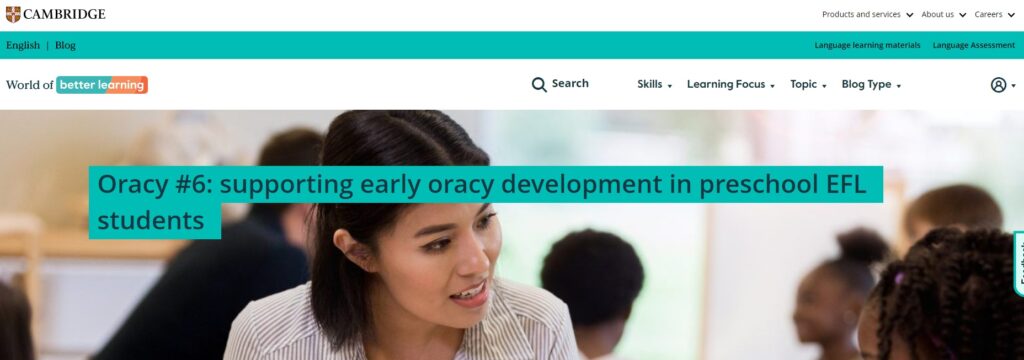
Oracy activities for supporting emerging English learners.
Curriculum Resources:
Public Speaking Activity Booklet By Leader Connecting Leaders
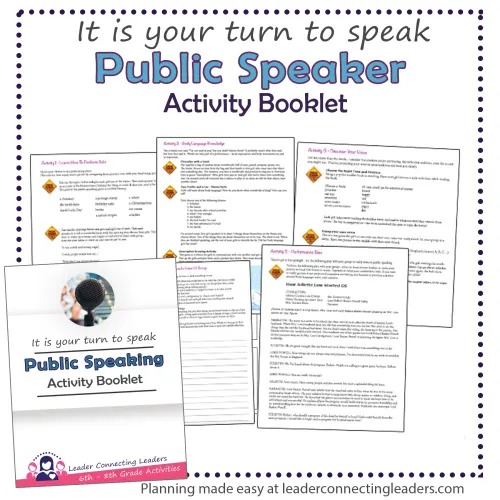
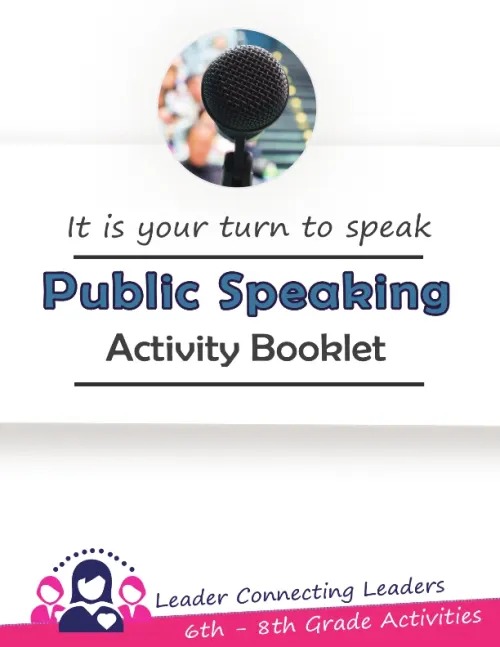
Taking Time for Teamwork Activity By Classroom Complete Press
Mini Ted Talk Project By Golden Promise
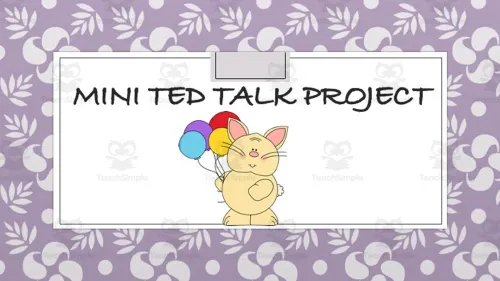
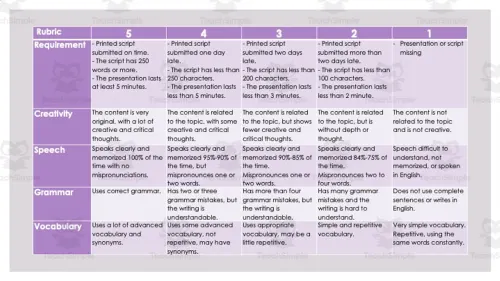
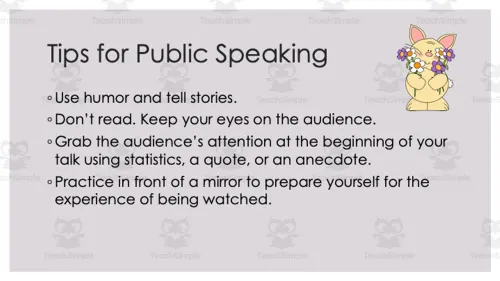
Let’s Talk Classroom Speaking Activity By Have Fun Teaching
Oracy Activities and Games for Online Learners From Talk the Talk
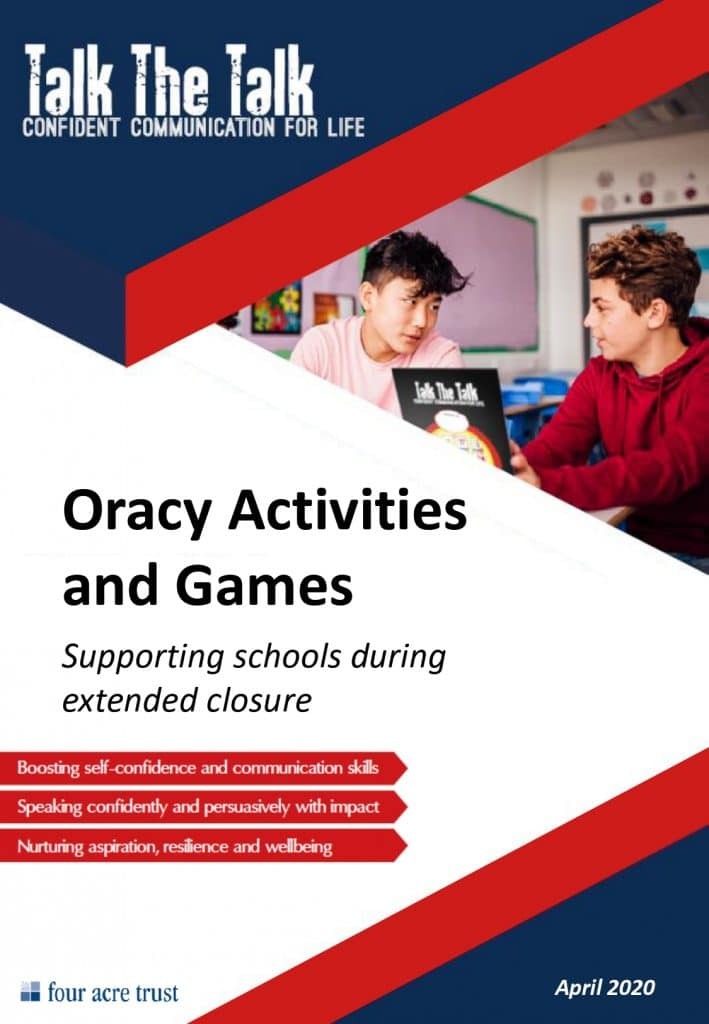
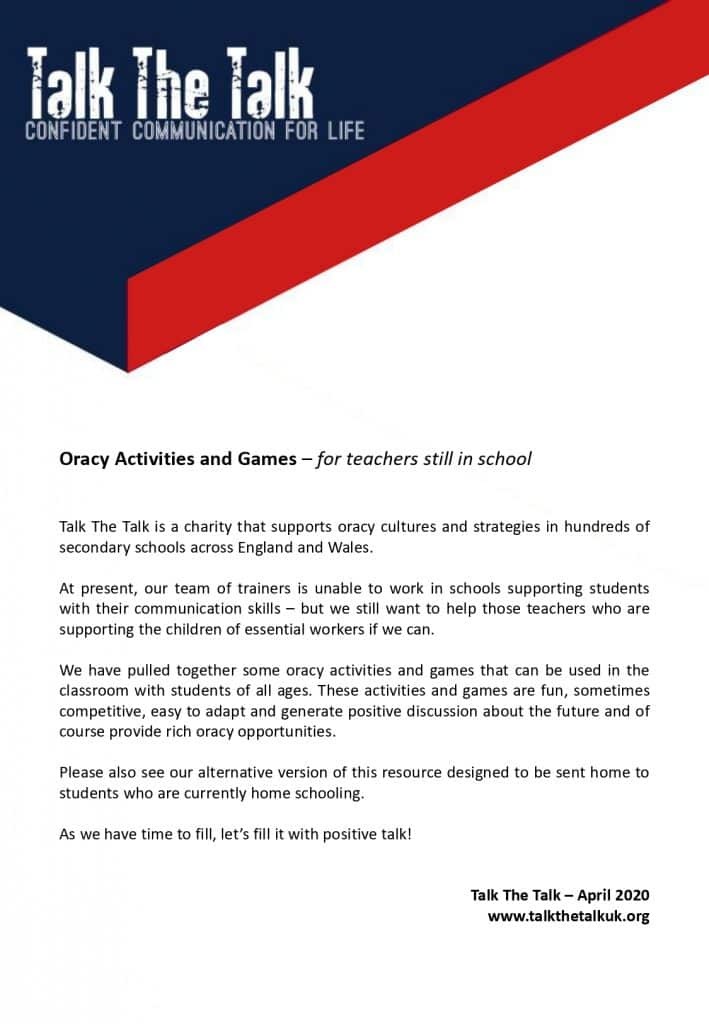
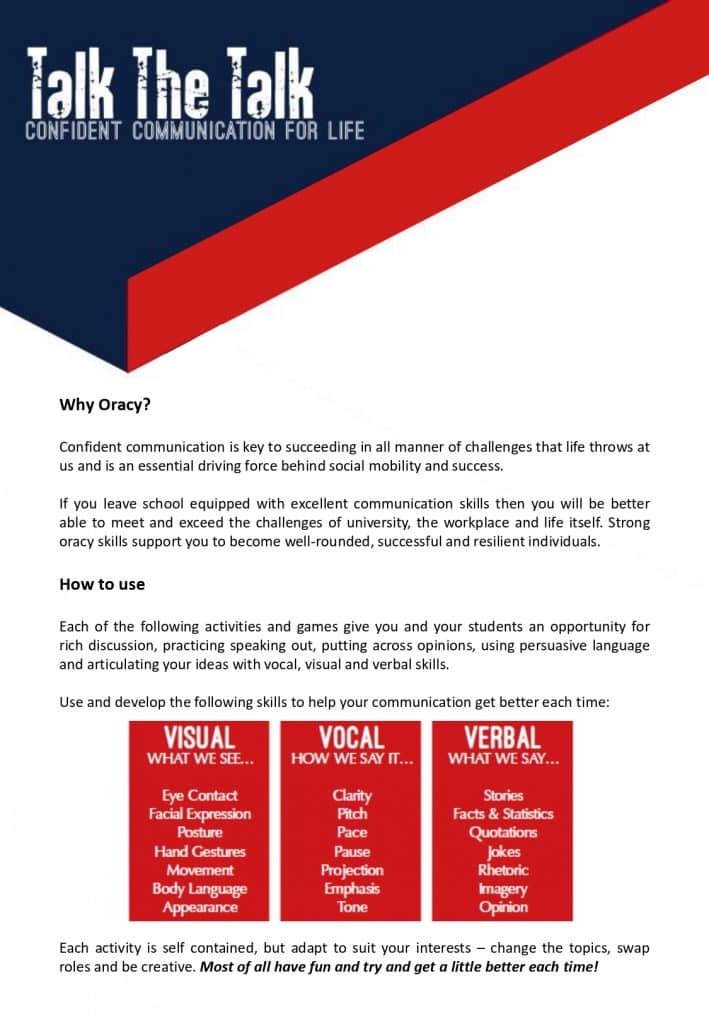
Oracy Activities and Games for Primary Students From Latton Green Primary Academy
Oracy FAQs
Oracy skills can be measured in a variety of ways. While it can be difficult to provide objective evidence of Oracy skills mastery (or deficits) there are a number of ways to demonstrate student skills, including choosing and measuring a specific response or activity and grading speaking, discussion, or presentations with a rubric that address the major strands of Oracy.
Assessing Oracy skills can be done by observing student groups, through one-on-one assessment, or by grading student presentations, debates, or other public speaking assignments. Cambridge University’s Oracy Assessment Toolkit provides specific rubrics and suggestions for grading Oracy skills.
Students’ oracy skills are boosted by being in a language-rich environment. A classroom that values student contribution and offers students a chance to speak about, debate or discuss various subjects will naturally foster growth in this skillset.
However, it is important that teachers also specifically address oracy skills by integrating opportunities to speak, question, role play, listen, and respond. Setting aside time for oracy or regularly including assignments that require spoken response or presentation will help develop these skills. Direct teaching of oracy skills, such as lessons on how to have a discussion, are also valuable.
Research consistently demonstrates that students who exhibit good oracy skills do better in school and are better adjusted socially. Students who can comfortably express themselves are more likely to have their needs met, both inside and outside of school, and more comfortable speaking with adults if they need help.
The ability to speak in public or to engage in meaningful discussions will provide advantages for students later in life, and has numerous practical applications – from college or job interviews, working with others in scholastic or employment scenarios and being able to negotiate or mediate with others.

By Jen Dayna Noffke
Dayna Noffke is a writer and former high school teacher, with experience working with general and special education students. She received her BA from University of Missouri, and later attended UGA, where she received her Georgia state teaching certificate. Her areas of special interest include alternative assessments for special education, quality of life IEP interventions for graduating students with disabilities and integrating art instruction into core curriculum.

